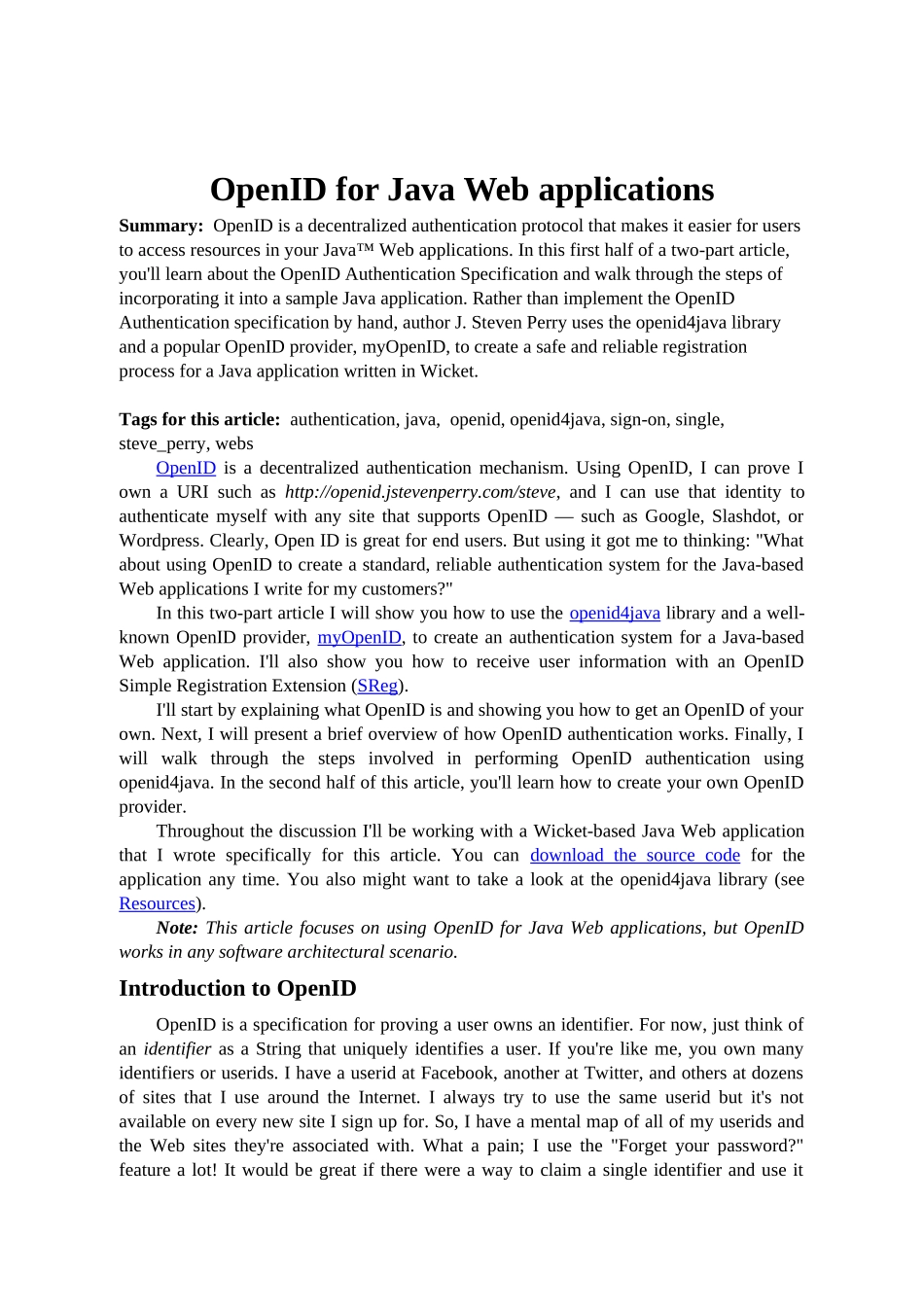专业外文翻译题 目小型企业网站的制作 系 (院)计算机科学技术系专 业计算机网络技术班 级学生姓名学 号指导老师职 称二〇一〇年五月二日OpenID for Java Web applicationsSummary: OpenID is a decentralized authentication protocol that makes it easier for users to access resources in your Java™ Web applications. In this first half of a two-part article, you'll learn about the OpenID Authentication Specification and walk through the steps of incorporating it into a sample Java application. Rather than implement the OpenID Authentication specification by hand, author J. Steven Perry uses the openid4java library and a popular OpenID provider, myOpenID, to create a safe and reliable registration process for a Java application written in Wicket.Tags for this article: authentication, java, openid, openid4java, sign-on, single, steve_perry, websOpenID is a decentralized authentication mechanism. Using OpenID, I can prove I own a URI such as http://openid.jstevenperry.com/steve, and I can use that identity to authenticate myself with any site that supports OpenID — such as Google, Slashdot, or Wordpress. Clearly, Open ID is great for end users. But using it got me to thinking: "What about using OpenID to create a standard, reliable authentication system for the Java-based Web applications I write for my customers?"In this two-part article I will show you how to use the openid4java library and a well-known OpenID provider, myOpenID, to create an authentication system for a Java-based Web application. I'll also show you how to receive user information with an OpenID Simple Registration Extension (SReg).I'll start by explaining what OpenID is and showing you how to get an OpenID of your own. Next, I will present a brief overview of h...


